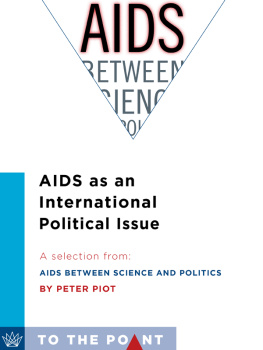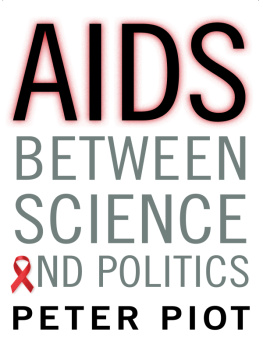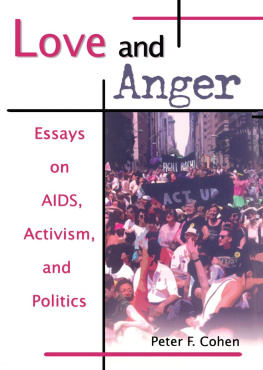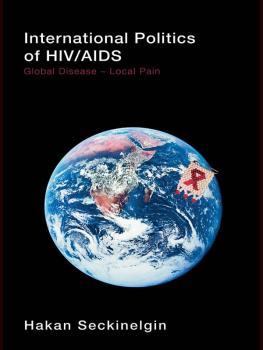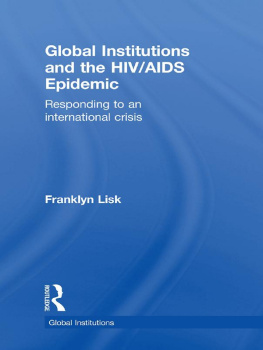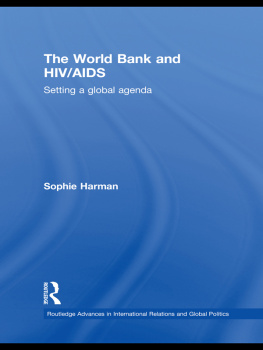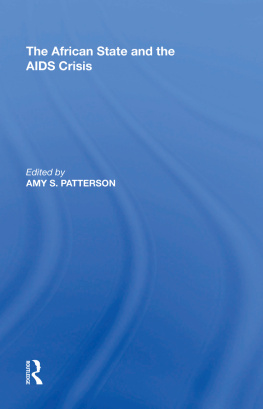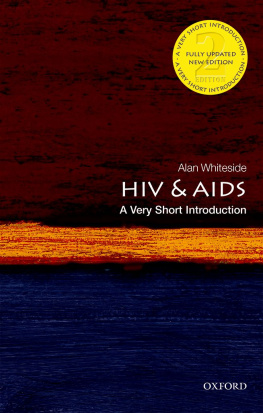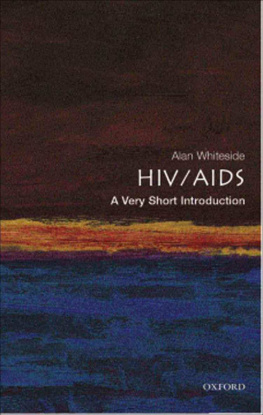AIDS as an International Political Issue
Peter Piot
A Selection from AIDS Between Science and Politics

Columbia University Press
New York
Columbia University Press
Publishers Since 1893
New YorkChichester, West Sussex
cup.columbia.edu
English translation copyright 2014 Columbia University Press
Originally published by Editions Odile Jacob. Copyright 2011 Odile Jacob
All rights reserved
Columbia University Press wishes to express its appreciation for assistance given by the Fondation du Collge de France toward the cost of publishing this book.
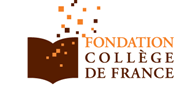
E-ISBN 978-0-231-53895-4
A Columbia University Press E-book.
CUP would be pleased to hear about your reading experience with this e-book at .
Cover design by Noah Arlow after an original design by Christopher Sergio
References to websites (URLs) were accurate at the time of writing. Neither the author nor Columbia University Press is responsible for URLs that may have expired or changed since the manuscript was prepared.
Contents
AIDS has been about politics from the beginning. Politics in its original and noble sense: not party politics but that of societal choices, debates, and engagement in the AIDS response. This chapter will discuss the transnational dimension of the AIDS response, which was a new development in health, and may be a precursor of other global solidarity movements.
The First Responses
AIDS is obviously an infectious disease, but since its discovery in 1981 it has been perceived as distinct from other diseases, largely because of its connection with sex and drugs. However, its image is not only a matter of modes of transmission, but also of the fact that the most affected population groups and people living with HIV often suffer discrimination, marginalization, and deep social prejudice. This stigmatizationreligious, moral, and socialhas a political dimension that can be a major obstacle to an effective AIDS response. On the other hand, the considerable cost of AIDS and its economic impact in the most affected countries have driven governments to act, sometimes under activist pressure.
A Global Public Good
The concept of global public good provides a strong foundation for an international response to AIDS. It can be defined as a resource, a good, or a service of benefit to all, of which the exploitation or preservation can justify collective international action. It gave a strong justification for paying more attention to global public goods:
We know that the marketplace is the most efficient way of producing private goods. But the market relies on a set of goods that it cannot itself provide: property rights, predictability, safety, nomenclature and so on. These goods often need to be provided by nonmarket or modified market mechanisms.
This concept reminds us that it is in the interests of everyone to act collectively. The interest of an action is not always immediately perceptible but everyone benefits in the long term. Absence of action or individual action for immediate profit can only have negative consequences for all. This is the theoretical basis a posteriori for transnational engagement on AIDS, in addition to the danger of worldwide contagion, even if in reality political pressure is often based on moral considerations and human rights. In other words, in the case of the AIDS pandemic, it is in the interest of everyone, anywhere in the world, that the spread of HIV be brought under control, and that people with HIV have access to lifesaving treatment. In addition, thanks to the globalization of information technology and social media, local or personal events can cause instantaneous and inordinate effects in a world where time and distance seem not to count. The financial crisis of 2009 and 2010 is a dramatic example. The butterfly effect was meteorologist Edward Lorenzs metaphor about the sensitive dependence on initial conditions in chaos theory. A beat of a butterflys wings in Paris could provoke a storm in New York weeks or days later. A minute variation in an element can be slowly amplified and ultimately produce enormous changes. If applied to human society, behavioral changes that seem insignificant to begin with can trigger large-scale upheavals, such as the new epidemic of HIV.
In the case of the AIDS pandemic, it is in the interest of everyone, anywhere in the world, that the spread of HIV be brought under control, and that people with HIV have access to lifesaving treatment.
A Transnational Issue
It was unprecedented for international aid. Never before had taxpayers money in high-income countries been used at such a scale for the treatment of a single chronic disease, with the tacit agreement that the financing would continue for decades, since treatment programs are required for a lifetime. This was the only way that antiretroviral treatment programs, a recurrent cost, could be extended from high-income countries to developing ones. It required the establishment of new international institutions such as UNAIDS, the Presidents Emergency Plan for AIDS Relief (PEPFAR), the Global Fund, and numerous community-based organizations. To that we can add many large and small existing NGOs that became major players in the global AIDS response, such as Mdecins sans Frontires (MSF), Partners in Health, Family Health International, Population Services International, and private foundations such as AmFAR, the Bill & Melinda Gates Foundation, the Clinton Foundation, and the Elizabeth Glaser Foundation. Finally the pharmaceutical industry became involved in various ways around the turn of the millennium.
UNAIDS | The Joint United Nations Programme on HIV/AIDS unites the efforts of eleven UN organizations and works closely with global and national partners in the fight against AIDS |
The Global Fund to Fight AIDS, Tuberculosis and Malaria | An international financing institution that invests in prevention, treatment, and care for AIDS, tuberculosis, and malaria |
Global Business Coalition | A private sector initiative of companies and organizations investing in public health |
International HIV/AIDS Alliance | A global partnership of community-based organizations that seek to prevent the spread of HIV and meet the challenges of AIDS |
Bill & Melinda Gates Foundation | Private grant-making foundation that supports numerous initiatives in research and development, public health, agriculture, and education |
Wellcome Foundation Trust | Global charitable foundation that supports research in biomedical sciences and global health |
UNITAID | Global health organization that uses innovative financing to increase funding for treatments and diagnostics for HIV/AIDS, malaria, and tuberculosis in low-income countries. |
International Council of AIDS Service Organizations (ICASO) | A resource for people living with HIV to support an HIV movement that contributes to health, human rights, and gender equality |
Global Network for and by People Living with HIV (GNP+) | An organization that advocates to improve the quality of life of people living with HIV |

